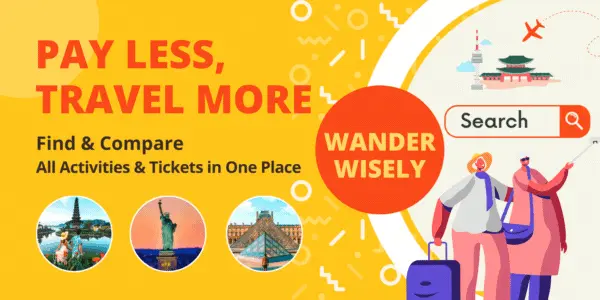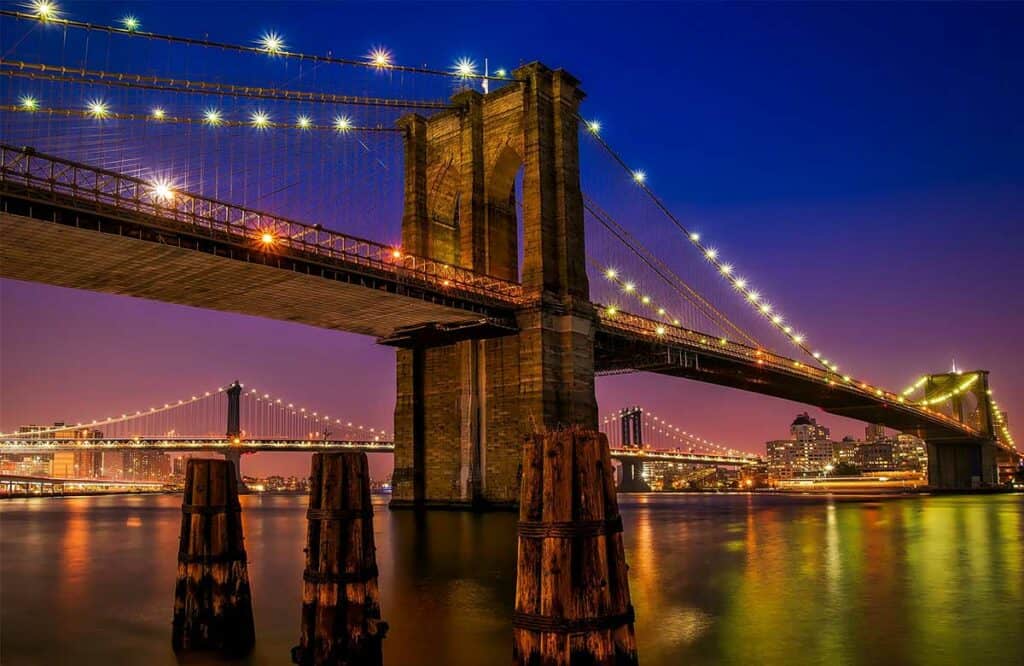New York City is one of the busiest cities, with residents constantly on the run. It is a hot mess during peak rush hours, with some calling NYC’s traffic congestion the worst in the world. That being said, many might assume it’s challenging to get around this city. Surprisingly, that’s not the case. NYC has a well-developed public transit system that helps visitors easily reach their destinations and is affordable. Likewise, visitors can walk or bike around without fear of getting lost. This Ultimate Guide to Public Transportation in New York details the best means of transport, costs, and timings.
Also Read:
- Ultimate Guide to the 10 Best Things To Do in New York City
- How to Get Around in Toronto
- Day Trips from Toronto
How To Get To New York City?
New York City is among the most developed cities in the US and worldwide. A leader in finance, technology, and culture, it features every kind of transport existing globally. Hence, getting to the city is very convenient. You can easily travel to NYC by flight, land transport, or sea cruises. Air travelers can book tickets to John F. Kennedy International Airport, LaGuardia Airport, or Newark Liberty International Airport. Kennedy and Newark have domestic and international flights, while LaGuardia offers flights to domestic and Canadian destinations.
If flights exceed your budget, you can take a train to reach NYC. It has two main rail stations in Manhattan: Penn Station and Grand Central Terminal. Other affordable options include buses and cars. Furthermore, you can sail to NYC on a cruise or ferry. Transatlantic Cruise involves sailing from Europe to North America and vice versa. Likewise, you can set sail from New York on an MSC Cruise to the Caribbean or up to the coast of Canada.
How Much Is Transportation In New York?
While NYC is among the most expensive travel destinations worldwide, the same can’t be said about its transportation expenses. Visitors can save money by choosing public transportation. A single ride on public transit costs only $2.90. Likewise, cabs and rideshares are affordable. The basic fare starts from $3, plus 50 cents per 1/5 mile when traveling above 12mph. You can also rent a car or bike at cheaper prices.
Next, how do we use public transportation in New York? The answer includes finding the correct means of transport, accessing the available maps and routes, booking tickets, and boarding the vehicle. Payment is also crucial throughout this process. NYC Public Transit accepts cash, MetroCard, and contactless payments with the OMNY system. You can buy OMNY cards and MetroCards for $1 from a vending machine or a retail store. OMNY is a rechargeable tap-to-pay system offering free transfers and a 12-ride fare discount. On the other hand, MetroCard offers various subscriptions, including unlimited 7-day and 30-day offers.
Getting Around New York City: How To Transport in New York?
NYC offers public and private transport options, ranging from cheap to luxurious. The most affordable option is public transport. The MTA (Metropolitan Transportation Authority) manages, maintains, and runs subway and bus services in New York City. This public transit is cheapest, environment-friendly, and operates 24/7. Likewise, private options include cabs, rideshares, bike rentals, bus tours, and luxury cruises.
Subway
- New York City Subway Map: Download on App Store, Google Play
MTA New York Subway is among the city’s best transport options and North America’s busiest systems. It has 472 stations on 25 routes and operates 24 hours a day, 7 days a week, and 365 days a year. This public transit system runs through Manhattan, the Bronx, Queens, and Brooklyn. It is one of the world’s longest systems, spread along 665 miles of track. Visitors won’t have a hard time navigating the subway system. They only need to book tickets and board the right train.
With nearly 500 stations, you must be worried about finding the right one for your desired destination. Fret not! You can download the MTA official app and enjoy real-time updates. You can check the train’s arrival time, stay informed of any trip changes like delays or disruptions, book tickets, and access New York City Subway maps. While on the train, try not to cause inconvenience for other passengers, leave accessible seats open for those who need them, and keep your belongings to yourself.
Timings
NYC Subway operates 24 hours a day, 7 days a week, 365 days a year. It follows five service patterns: rush hour, midday, evening, late night, and weekend. During morning and evening rush hours, special trains operate. You can check the subway timetable on MTA’s official website or the Subway Time NYC app.
Ticket Prices
The subway is the cheapest public transportation in New York. Riders usually pay $2.90; fares are reduced for people with disabilities or 65 and older. You can pay in cash or use the contactless fare payment system OMNY. You can also swipe a pay-per-ride MetroCard.
| Passenger/Fare Type | Fare |
| Subway Fare | $2.90 |
| 65+ (Reduced Fare) | $1.45 |
| Single ride | $3.25 |
| Unlimited 7-day MetroCard | $34 (Reduced Fare: $17) |
| Unlimited 30-day MetroCard | $132 (Reduced Fare $66) |
| Paratransit and Acess-A-Ride | $2.90 |
Buses
- NYC Bus Time App: Google Play, App Store
What could be a better alternative to the subway? NYC’s bus system gives its subway system a run for its money. The city has several kinds of buses, including local buses, Select Bus Service buses, Limited buses, and Express buses. The first three charge the same fare, while the Express bus is slightly more expensive. This coach-looking bus is faster than other buses and operates during weekday rush hours. On the other hand, SBS and LTD make fewer stops than local buses.
You can easily spot bus stops from its lollipop signs (tall, round signs with a bus symbol and route number). Some are marked with rectangular blue signs, while the older ones are green. Furthermore, buses are comparatively safer than the subway. It is also cost-effective and has flexible routes. However, these benefits have also created several cons. Since it’s cheap, many people take buses to reach their office or any destination. So, expect a crowded scene, especially during peak hours. It can also be uncomfortable to travel on.
Timings
MTA Bus operates 24 hours a day, 7 days a week. It has different schedules for Local/Limited/SBS and Express buses. Buses’ arrival and departure times also vary from region to region. You can only board and get off the bus at designated bus stops during the day. However, your bus operator can let you off at locations without bus stops from 10 AM to 5 AM.
Ticket Prices
NYC Buses accept all sorts of payments, from cash to MetroCard, OMNY, exact coin change, and SingleRide tickets. OMNY is the best method, allowing you to use the same card or device throughout your trip. You can quickly pay your bus fare with your phone, debit, or credit card. If you paid in coins, you can transfer from a local bus on one route to a local bus on another route.
| Fare Type | Fares |
| Local, Limited, and Select Bus Service | $2.90 |
| Express Buses | $7 |
| 7-Day MetroCard | $34 |
| 30-Day Unlimited MetroCard | $132 |
| 7-Day Unlimited Express Bus Plus | $64 |
| AirTrain JFK 30-Day Unlimited Ride | $42.50 |
| AirTrain JFK 10-Trip | $26.50 |
Ferries
- Download From: App Store, Google Play
- NYC Ferry Social Media: Official Website, Official Instagram, Official Facebook
We can’t ignore ferries on our ultimate guide to public transportation in New York. The city has multiple ferry systems, including the NYC Ferry, the NY Water Taxi, the Liberty Landing Ferry, and the Staten Island Ferry. The Hornblower Cruise operates the NYC Ferry in all five boroughs. It offers a free ferry service from its six routes spanning over 60 nautical miles of waterways. You can buy a ticket from ticket machines, which include free transfers and zero bike fees. You can check its routes and schedules via the NYC Ferry App.
Another free ferry service provider is the Staten Island Ferry. It is one of the last operating ferry systems in NYC, taking almost 70,000 passengers daily between Staten Island’s St. George and Manhattan’s Whitehall. Let’s look at the fare structure of other ferry systems below:
| Ferry Operator | Fare |
| NY Water Taxi | $4.5 (One-way), $29 (10-Trip Pass) |
| Liberty Landing City Ferry | $10 (Adult), $5 (Children 7 – 12), $6 (Seniors) |
| NY Waterway’s Edgewater Ferry Landing | $12.25 (One-Way Adult), $8.50 (Children 5 & Under) |
| Seastreak (Between New Jersey and New York City) | $28 (One-Way 13+), $49 (Round Trip 13+) |
| Circle Line Sightseeing Cruises | $29 (Liberty Super Express Downtown), $49 (Best of NYC), $27 (Liberty Midtown) |
Taxis
Many of us must be familiar with yellow-colored cabs. However, NYC has two taxis: yellow and green. Yellow Cab (Medallion Taxi) is the only vehicle to pick up prearranged and street-hailing passengers anywhere in the city. There are 13,587 of these vehicles. These taxis have a medallion that is auctioned by the city.
Green Cab (Boro Taxi) is a for-hire vehicle permitted to accept street hails. Drivers must have a street-hail livery permit that is attached to their license. These apple-green-colored cabs pick up passengers from the other boroughs and north of the yellow zone in Manhattan. Both Boro and Medallion Taxis have the exact fare structure. Learn more about it from the figure down below:
| Fare Type | Fare |
| Base Fare | $3 |
| Improvement Surcharge | +$1 |
| Overnight Surcharge 8 PM to 6 AM | +$1 |
| Rush Hour Surcharge (from 4 PM to 8 PM on weekdays) | +$2.5 |
| MTA State Surcharge | +50 cents for all trips that end in NYC |
| New York State Congestion Surcharge | $2.5 (Yellow Taxi), 2.75 (Green Taxi) |
Rideshares
Rideshares are the best option if you want to ride comfortably and conveniently. Contrary to what many believe, rideshares are not more expensive than traditional taxis. Some charge less fare than cabs; some even offer you the option to select your price before booking a ride. Let’s look at the following top NYC rideshare apps:
Uber

- Price Range: $47.89 (average rate of Uber Black)
- Download From: Google Play, App Store
- Social Media: Official Website, Official Facebook, Official Instagram
Who here hasn’t heard of Ubers? It is a go-to taxi app in the majority of countries worldwide. It offers competitive rates with no hidden costs. You can ride in style and comfort with Uber’s luxury options, like Uber Black and Uber Black SUV. This vehicle can accommodate up to 4 passengers and includes a professional driver, luggage assistance, and flexible pickups. Choose Uber Black Hourly or Uber Black SUV Hourly if you want hourly luxury rides. The fare depends on distance, ride options, and time of the day.
Lyft
- Price Range: Lyft($1.82/mile), Lyft XL($2.49/mile), Extra Comfort($2.24/mile), Lux Black($7.25), Lux Black XL($13.25)
- Download From: Google Play, App Store
- Social Media: Official Website, Official Facebook, Official Instagram
Next, Lyft offers a ride for every occasion. Whether riding to work or needing an urgent ride, you can count on this taxi app to help you reach your destination safely. You only need to download the application, request a ride, board the vehicle, and pay upon arrival. Moreover, Lyft offers multiple options for solo riders and groups. You can also choose from Extra Comfort and Black XL for spacious luxury rides. Or, you can choose a shared option to ride and split the cost with others similarly.
Arro
- Price Range: $2 (Service fee), $3 (Reservation fee), $2 (Cancellation fee)
- Download From: Google Play, App Store
- Social Media: Official Website, Official Facebook, Official Instagram
Hail cabs with NYC taxi app ARRO. Its easy-to-use tools help you quickly book and pay for taxi rides. You only need to input your destination on the app. You will immediately receive a fare estimate, route preview, and an ETA for the nearest available driver for your trip. The fare is paid automatically with the card on file or other payment methods added to your account. This app is available in New York, Miami, Chicago, Houston, San Francisco, Boston, and London.
Curb
(Source: Curb Facebook)
- Price Range: Curb fare from JFK Airport to Brooklyn Bridge: $71.69
- Download From: Google Play, App Store
- Social Media: Official Website, Official Facebook, Official Instagram
Enjoy a low-cost ride with Curb. This application is available in major cities across the US, including New York. Whether you need an early pickup or want to book a ride after a meeting, this app is the perfect solution. You can choose ‘Ride Now’ for immediate pickup and ‘Ride Later’ to request a ride in advance. When you have reached the journey, tap ‘Pair & Pay’ to pay online. You will receive a receipt by email. Furthermore, Curb doesn’t have surge pricing and is cheaper than Uber or Lyft for trips under 5 miles.
Revel
(Source: Revel X)
- Price Range: $3 to hail the ride, plus $1.6 per-mile charge and $0.72 per-minute rate
- Download From: Google Play, App Store
- Social Media: Official Website, Official X, Official Instagram
Enough of traditional cars; it’s time to go electric. Revel, founded in Brooklyn in 2018, operates in New York City. It aims to accelerate EV adoption by providing services and infrastructures related to electronic vehicles. It offers all-electric, safe, and affordable rides. Furthermore, Revel has luxurious vehicles, including the Tesla Model 3, Tesla Model Y, and the Kia Niro. You can expect a comfortable ride with vetted drivers.
Biking
While public transport is the cheapest transport medium, it has its cons. It is usually slower, prone to traffic, crowded, and only follows main routes. Why don’t you ride to the off-beaten path with a bike? Biking allows riders to avoid famous attractions and explore hidden local gems. You will enjoy fresh air while pedaling and also have opportunities to interact with locals. Renting a bike in NYC is very convenient. You can choose from any of the following bike-sharing and rental programs:
- Citi Bike: $18.33/month, Citi Bike+Grubhub+Lyft: $16.58/month, Single ride: $4.79
- Bike Rent NYC: Classic bike: $12.60/hour, E-scooter: $22.50/hour, Electric bike: $27/hour
- Bike Rental Central Park: Lightweight model: $12/hour, Couple Bike: $22/hour, Urban exploring: $19/hour
- Unlimited Biking: Hybrid Straight: $25, Kids Bike: $20, E-bike: $40, Tandem Bike: $50
Walking
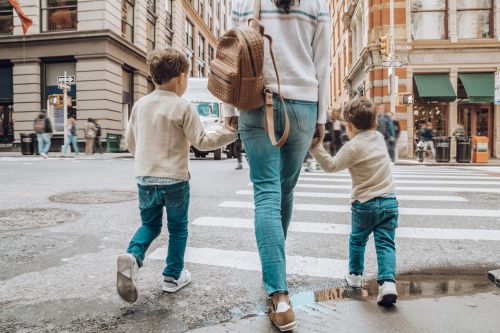
How to get around New York City? What could be a better option than walking? This city has pedestrian-friendly neighborhoods where you can enjoy a pleasant stroll and explore local attractions. The best walkable neighborhoods are Brooklyn Heights, SoHo, Chinatown, Hudson Yards, Greenwich Village, Central Park, and the Meatpacking District. If you want to capture Instagram-worthy snaps, head to the Brooklyn Bridge. The wide pedestrian walkway through the bridge’s center offers stunning views of the Statue of Liberty and Manhattan. Likewise, Central Park is best for birdwatching, SoHo is for shopaholics, and Meatpacking District promises exciting nightlife.
At least, we conclude our blog on the ultimate guide to public transportation in New York. The subway and buses are the most affordable, while taxis, rideshares, and rentals charge slightly more. You can choose the one that fits your budget and is within your comfort range. NYC is a large city with over 8 million residents. Hence, you should prepare for crowded scenarios and heavy traffic. To avoid crowds or traffic congestion, avoid traveling during peak rush hours, 8-9 AM and 3-7 PM on weekdays.
 Chat with AI about How to get around New York.
Chat with AI about How to get around New York.